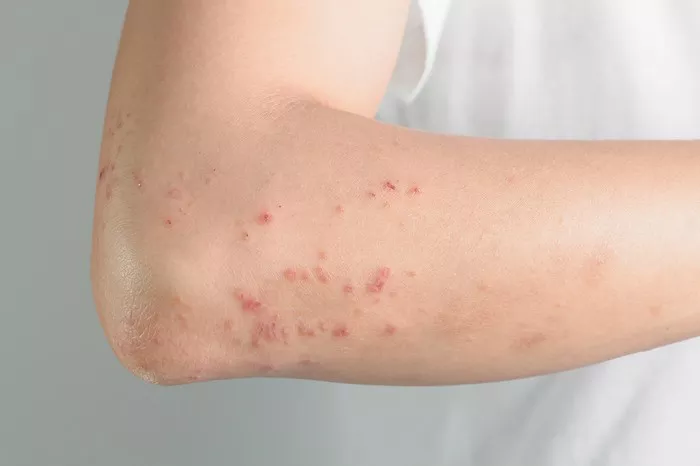Ringworm, despite its name, is not a worm. It is a fungal infection that affects the skin, scalp, and nails. This condition is caused by a group of fungi known as dermatophytes. Ringworm can be itchy, uncomfortable, and sometimes embarrassing. In this article, we will explore the most effective treatments for ringworm, covering both over-the-counter and prescription options.
Understanding Ringworm
What Causes Ringworm?
Ringworm is caused by fungi that thrive in warm, moist environments. These fungi can be spread through:
Direct Contact: Touching an infected person or animal.
Contaminated Surfaces: Walking barefoot on infected soil or using shared items like towels or combs.
Fomites: Infected items such as clothing or bedding.
Symptoms of Ringworm
The symptoms of ringworm can vary depending on the affected area. Common signs include:
Red, Scaly Patches: These often have a raised border.
Itching: The infected area is usually itchy.
Bald Patches: In cases of scalp ringworm, hair may fall out.
Discolored Nails: Fungal infections can cause nails to become thick or discolored.
SEE ALSO: Preventing 5 Ringworm Transmission from Cats to Humans
Over-the-Counter Treatments
Topical Antifungals
For many people, over-the-counter (OTC) treatments are effective in managing ringworm. These are usually topical antifungals available in creams, lotions, and sprays. Common options include:
Clotrimazole (Lotrimin): This cream is applied to the affected area twice a day for at least two weeks.
Miconazole (Monistat-Derm): Available as a cream or powder, it also requires application twice daily.
Terbinafine (Lamisil AT): This is a powerful antifungal cream that can be used once daily for one week.
Tolnaftate (Tinactin): This is a widely used antifungal that is effective against ringworm.
When to Use OTC Treatments
Over-the-counter treatments are suitable for mild cases of ringworm, particularly on the body and feet. They are often effective for superficial infections. However, they may take several weeks to clear the infection completely.
Prescription Treatments
If OTC options are not effective, a healthcare provider may prescribe stronger treatments. These can be topical or oral.
Topical Prescription Antifungals
For more severe cases of ringworm, prescription-strength topical antifungals may be necessary. These include:
Ketoconazole: A potent antifungal that is effective against a variety of fungal infections. It is usually applied once daily.
Ciclopirox: Often used for nail fungus, ciclopirox can also treat ringworm and is applied once daily.
Oral Antifungals
In cases where the infection is extensive or resistant to topical treatments, oral antifungals may be prescribed. These include:
Terbinafine (Lamisil): This is often the first choice for systemic treatment. It is taken once daily for 6 to 12 weeks, depending on the severity and location of the infection.
Griseofulvin: Another oral option, this medication is typically prescribed for 6 to 8 weeks for scalp infections.
Fluconazole: This is a broad-spectrum antifungal that may be used in more severe cases.
When to Seek Prescription Treatment
If over-the-counter treatments do not improve symptoms after two weeks, or if the infection is severe, you should consult a healthcare provider. Persistent infections can lead to complications, such as secondary bacterial infections.
Preventing Ringworm
Personal Hygiene
Maintaining good personal hygiene is essential in preventing ringworm. Here are some tips:
Wash Hands Regularly: Especially after touching animals or communal surfaces.
Keep Skin Dry: Fungi thrive in moist environments. After bathing, dry your skin thoroughly.
Avoid Sharing Personal Items: Do not share towels, combs, or clothing.
Environmental Measures
Preventing ringworm also involves keeping your living environment clean:
Clean Common Areas: Regularly disinfect areas where people walk barefoot, such as bathrooms and locker rooms.
Control Humidity: Use dehumidifiers in damp areas to reduce fungal growth.
Home Remedies for Ringworm
Some people opt for natural remedies alongside conventional treatments. While these may not replace medical treatment, they can provide additional relief:
Tea Tree Oil
This essential oil has antifungal properties. Dilute it with a carrier oil and apply it to the affected area twice daily.
Apple Cider Vinegar
Some believe that applying diluted apple cider vinegar can help. It should be used cautiously, as it may cause irritation.
Garlic
Garlic is known for its antifungal properties. You can make a paste from crushed garlic and apply it to the affected area.
Aloe Vera
Aloe vera is soothing and may help reduce inflammation and itching. Apply the gel from the plant directly to the infected area.
Understanding Side Effects and Precautions
Topical Treatments
Most OTC topical treatments have minimal side effects. However, some may experience:
Skin Irritation: Redness or itching at the application site.
Allergic Reactions: Rarely, individuals may be allergic to ingredients in the creams.
Oral Treatments
Oral antifungals can have more significant side effects, including:
Gastrointestinal Issues: Nausea, vomiting, or diarrhea.
Liver Function Changes: Regular monitoring may be necessary for prolonged use.
Allergic Reactions: Look for signs such as rash or difficulty breathing.
It’s essential to discuss your medical history with your healthcare provider before starting any prescription medication.
Conclusion
Ringworm is a common fungal infection that can often be treated effectively with over-the-counter antifungal medications. For persistent or severe cases, prescription treatments may be necessary. Alongside medication, maintaining good hygiene practices is vital for preventing reinfection.
If you suspect you have ringworm or if your symptoms do not improve with treatment, consult a healthcare provider for a proper diagnosis and tailored treatment plan. By addressing the infection promptly, you can minimize discomfort and reduce the risk of spreading it to others.
Related topics:


























